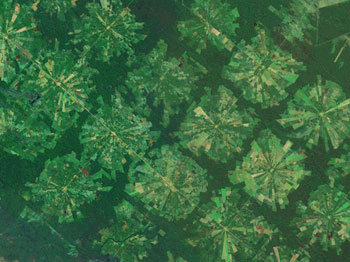Cargill busted in the Amazon rainforest
Cargill busted in the Amazon rainforest
mongabay.com
March 26, 2007
Brazilian authorities have shut down Cargill Incorporated’s deepwater soy export terminal on the Amazon River reports the Associated Press. The action comes after a local judge ruled that the firm failed to prepare a proper environmental impact statement for the project.
Cargill said it will to appeal the ruling, noting that its environmental impact statement has been accepted by the state of Para, where the port is located.
Green groups, who blame rising soybean production as a increasingly important driver of deforestation in the world’s largest rainforest, nevertheless cheered the ruling.
“The stopping of activities at the Cargill port are the crowning achievement of a fight that has been fought for many years by the local communities of Santarém,” said Tatiana de Carvalho, of the Greenpeace Brasil campaign for the protection of Amazônia. “They will continue to fight the expansion of the soy in the Amazônia. Soy and other agricultural products are basic vectors of deforestation that threatens biodiversity and provokes climatic change.”
 Agricultural clearing in the Amazon rainforest. Satellite image courtesy of NASA |
“We trust that the Cargill will respect the respect the decision and conduct a thorough environmental impact study that results in concrete measures to minimize the environmental damages caused by its port and the expansion of the soy in all the region,” she added. “This will be an opportunity for Cargill to demonstrate it commitment to the moratorium on deforestation which was announced for the soy sector last year.”
Last October, Cargill and other major soy crushers and exporters implemented a two-year moratorium on trading soybeans grown on newly deforested lands in the Amazon basin. The governance program was announced shortly after an investigation by environmental group Greenpeace that found soy cultivation is contributing to deforestation in the Amazon.
Soybean production has boomed in the Amazon is recent years due to high commodity prices and the development of a new variety of soybean developed that flourishes in rainforest climate. Agricultural firms have converted extensive areas of rainforest and cerrado, a savanna-like ecosystem, into industrial soybean farms. Scientists say soybean expansion has further driven deforestation by pushing small farmers into more marginal forest areas.
“Soybean farms cause some forest clearing directly. But they have a much greater impact on deforestation by consuming cleared land, savanna, and transitional forests, thereby pushing ranchers and slash-and-burn farmers ever deeper into the forest frontier,” wrote Philip Fearnside, co-author of 2004 Science paper on Amazon deforestation and member of Brazil’s National Institute for Amazonian Research in Manaus. “Soybean farming also provides a key economic and political impetus for new highways and infrastructure projects, which accelerate deforestation by other actors.”
The October initiative, led by the Brazilian Association of Vegetable Oil Producers and the National Grains Exporters’ Association, “seeks to reconcile environmental conservation with economic development, through the responsible and sustainable use of Brazil’s natural resources,” according to a joint statement from the groups.
The groups said that during the two-year period, the agricultural sector will work with the Brazilian government to prepare an effective mapping and monitoring system for the Amazon biome, develop strategies to encourage soy producers to comply with the Brazilian forestry laws, and collaborate with other groups to layout rules on how to conduct operations in the region. They say the industry will not buy soy from plantations that use slave labor.
The Amazon is the world’s largest and most diverse expanse of intact forest in the world. Experts estimate that roughly 18 percent of its 1.6 million square miles (4.1 million square kilometers) have been destroyed and warn that climate change could put further area at risk in the near future.
This article uses information from the AP, Greenpeace Brasil, and previous mongabay articles.